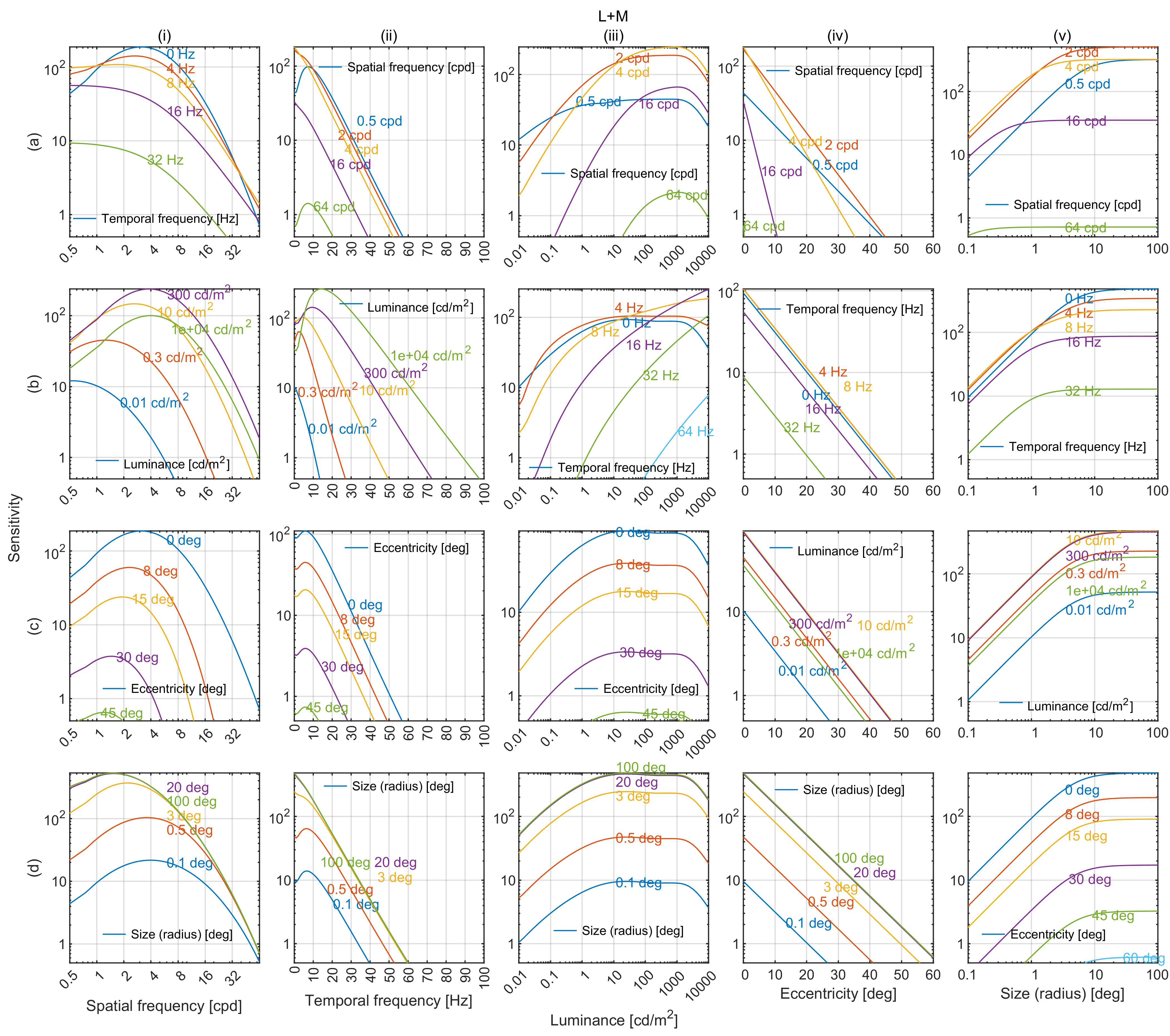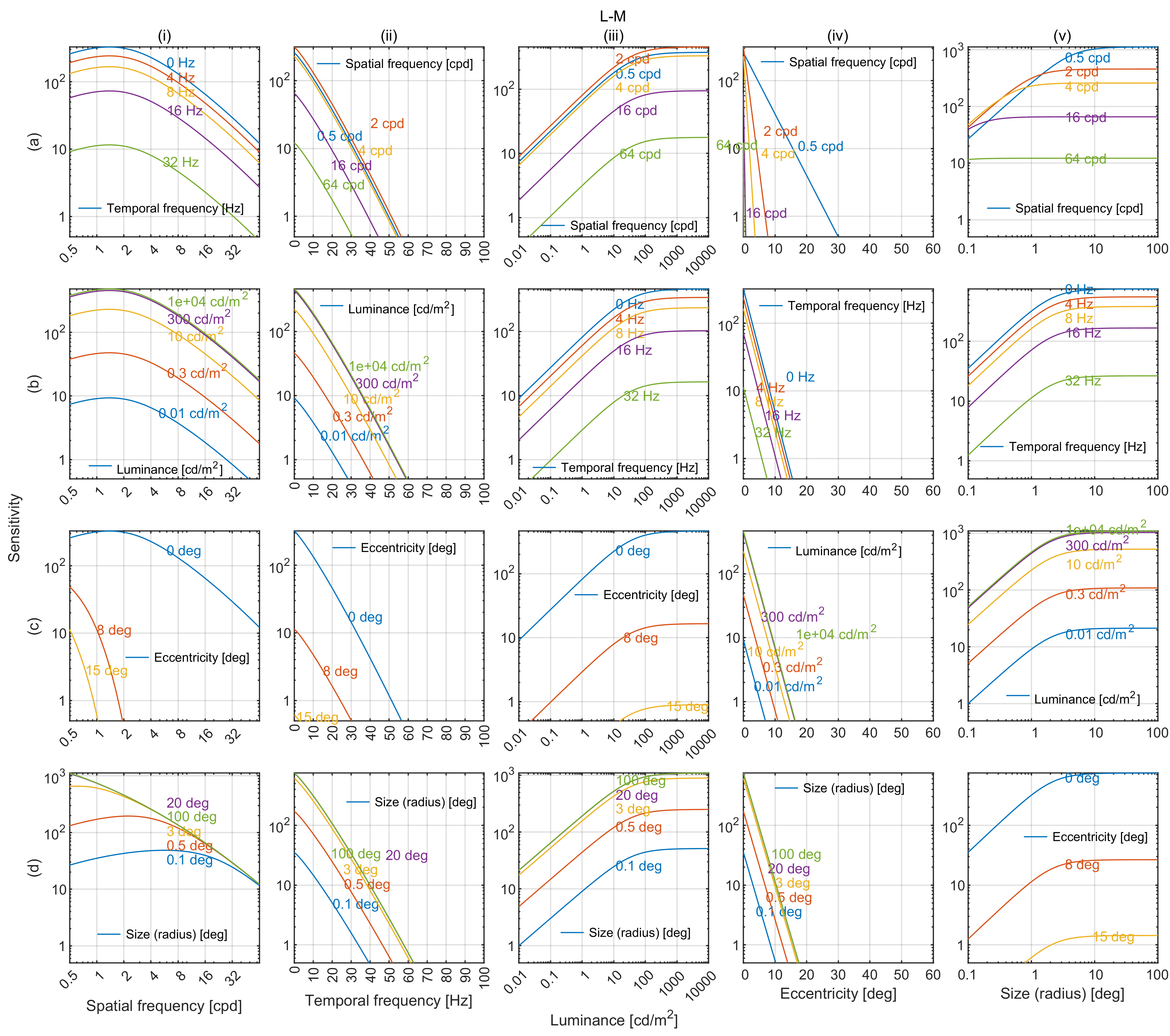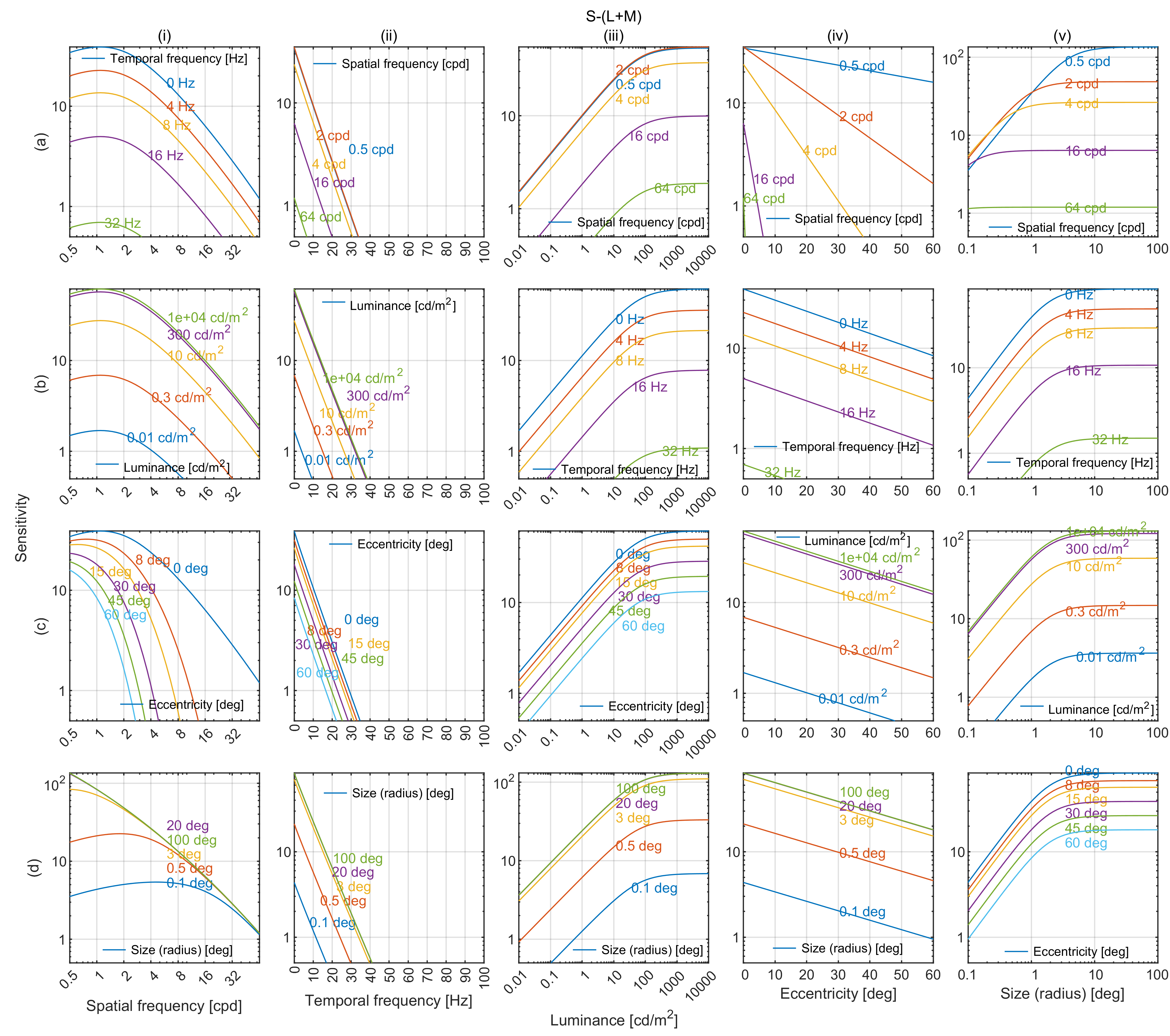Projects
castleCSF: A Contrast Sensitivity Function of Color, Area, Spatio-Temporal frequency, Luminance and Eccentricity
Maliha Ashraf(1), Rafał K. Mantiuk(1), Alexandre Chapiro(2), and Sophie Wuerger(3)
(1)University of Cambridge, (2)Reality Labs, (3)University of Liverpool






Achromatic (left), red-green (middle), and yellow-violet (right) contrast sensitivity predictions by castleCSF along 5 dimensions of stimuli.
Abstract
The Contrast Sensitivity Function (CSF) is a fundamental visual model explaining our ability to detect small contrast patterns. CSFs found many applications in engineering where they can be used to optimize a design for perceptual limits. To serve such a purpose, CSF must explain possibly a complete set of stimulus parameters, such as spatial and temporal frequency, luminance, and others. Although numerous contrast sensitivity measurements can be found in the literature, none fully explains the complete space of stimulus parameters. Therefore, in this work, we first collect and consolidate contrast sensitivity measurements from 18 studies, which explain the sensitivity variation across the parameters of interest. Then, we build an analytical contrast sensitivity model that explains the data from all those studies. The proposed castleCSF model explains the sensitivity as the function of spatial and temporal frequencies, an arbitrary contrast modulation direction in the color space, mean luminance and chromaticity of the background, eccentricity, and stimulus area. The proposed model uses the same set of parameters to explain the data from 18 studies with an error of 3.59 dB.
Materials
- Paper:
castleCSF — A contrast sensitivity function of color, area, spatiotemporal frequency, luminance and eccentricity
Maliha Ashraf, Rafał K. Mantiuk, Alexandre Chapiro and Sophie Wuerger
Journal of Vision, 24(4), 2024
[doi] [paper PDF] - Code and data [Github]
- Full results of castleCSF fitting on 18 datasets
- Detailed results:
- Comparison of CSF models as functions of spatial frequency, luminance and area
- Comparison of CSF models as functions of spatial and temporal frequency, luminance and area
- Comparison of CSF models as functions of spatial and temporal frequency, luminance, area and eccentricity
- Comparison of CSF models as functions of spatial, luminance, and area for three DKL colour directions
- Comparison of CSF models as functions of spatial, luminance, area and colour directions
- Comparison of CSF models as functions of spatial, luminance, and colour directions
- Comparison of castleCSF with chromatic Pyramid of visibility as functions of spatial and temporal frequency, luminance, and colour directions without removing lower spatial and temporal frequencies
- Comparison of castleCSF with chromatic Pyramid of visibility as functions of spatial and temporal frequency, luminance, and colour directions with lower spatial and temporal frequencies removed
- Full results of castleCSF 5-folds fitting on 18 datasets
- Results from fitting a Multi-Layer Perceptron (MLP)
